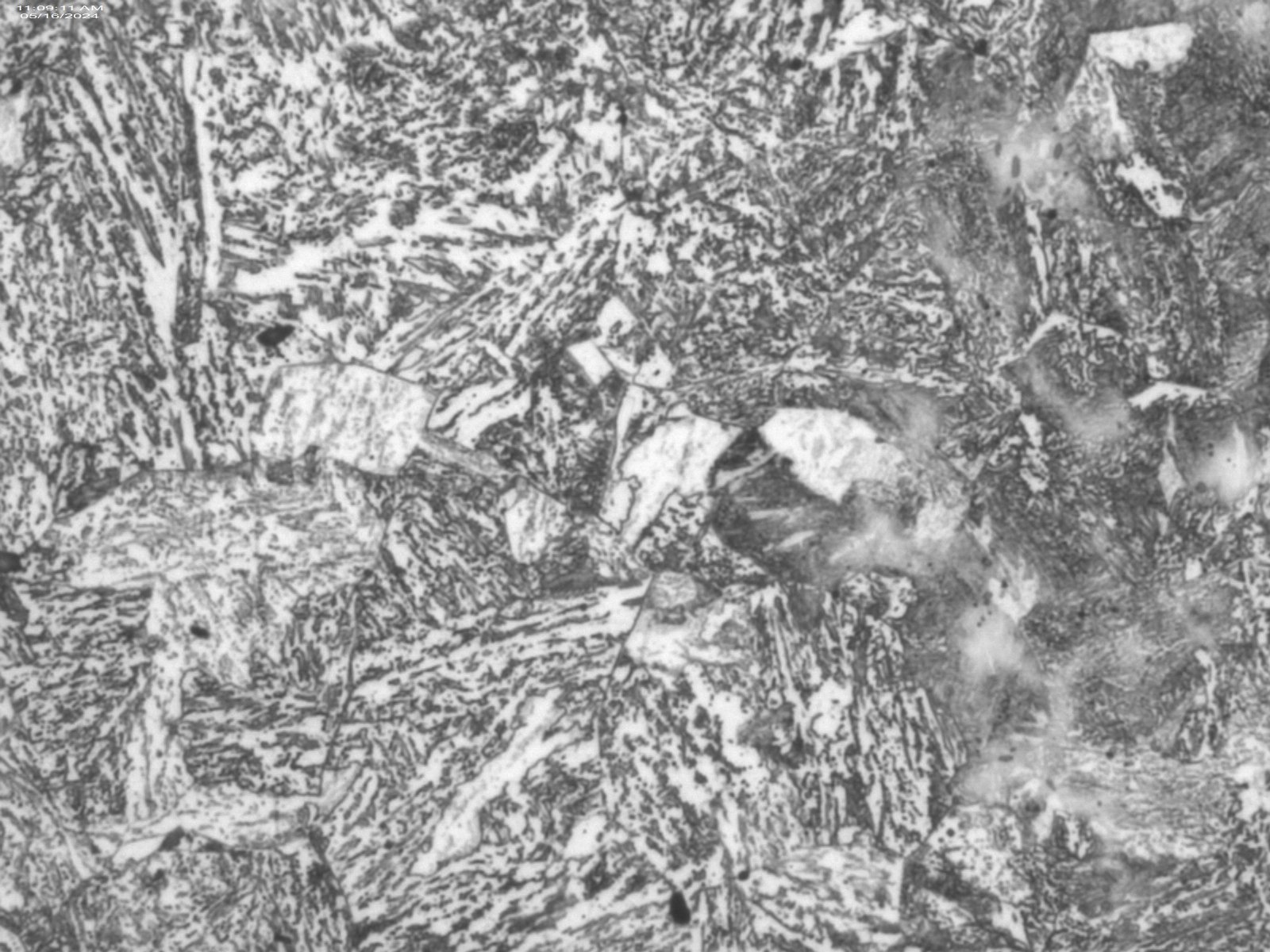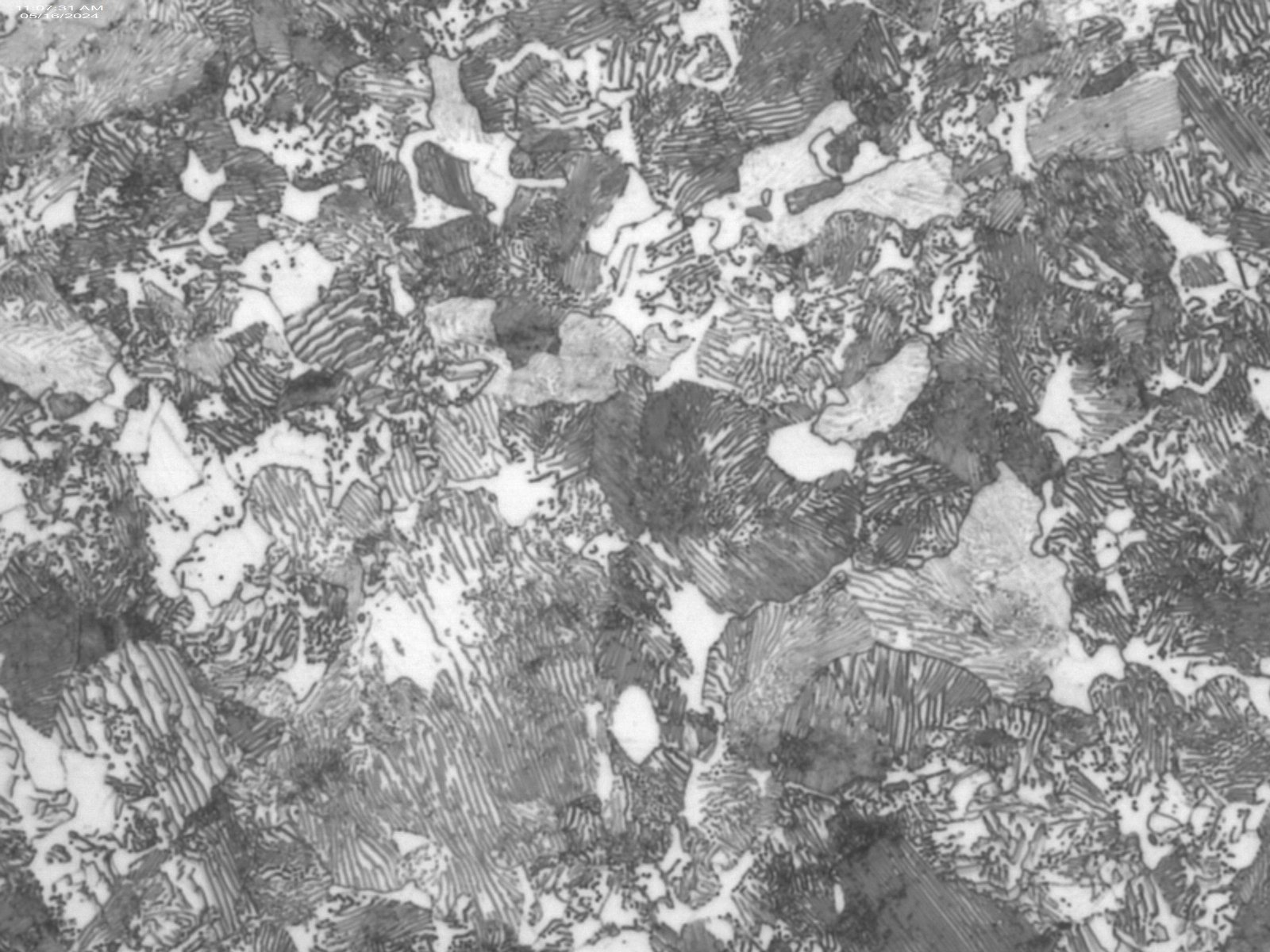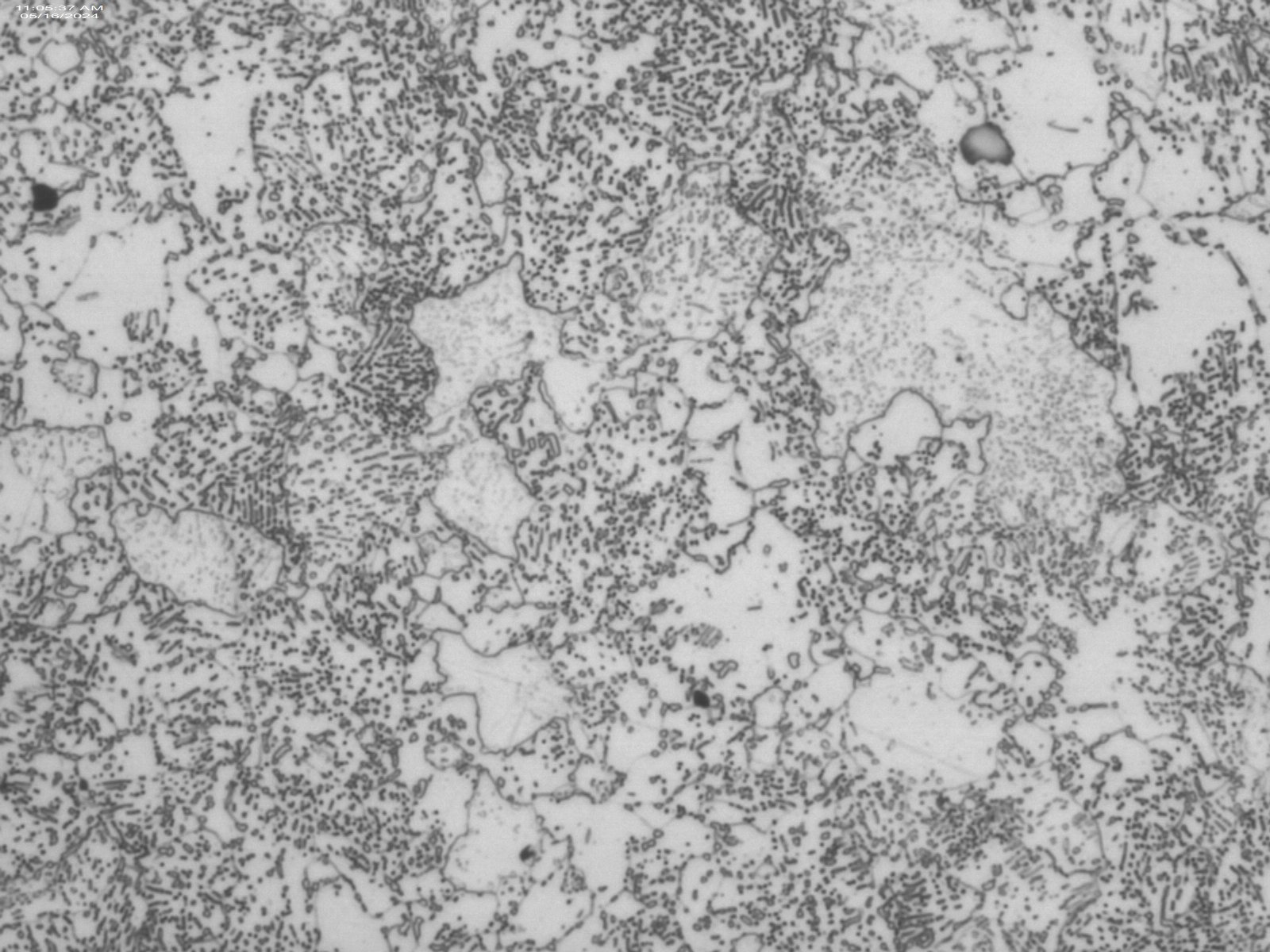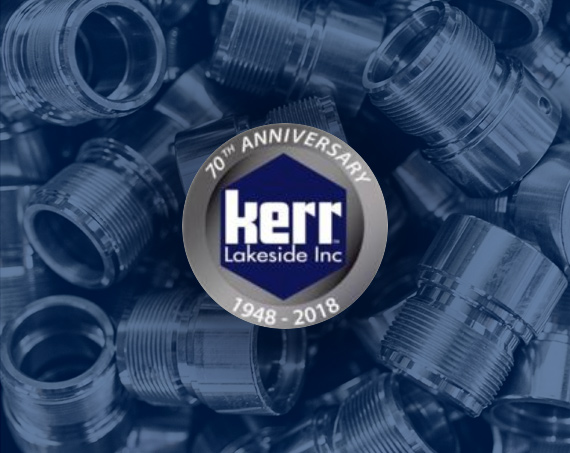The choice of annealing processes depends on the steel's desired mechanical properties and end-use application. Spheroidized annealed steel is more common in the cold heading process. Lamellar pearlitic anneal is more common for screw machine applications. Let's look deeper at the differences and characteristics of green steel, annealed steel, spheroidize annealed steel stress relief anneal, and lamellar pearlitic anneal.
Green Steel
Green steel refers to the initial condition of steel after it has been rolled and before any annealing process has been applied. It is typically a combination of bainite and ferritic-pearlitic microstructure. It is harder than material that has been annealed and will not form well for parts with more extensive upsets.
Annealing Process:
Post-part production thermal processes are referred to as heat treating where, whereas pre-part production thermal processes are referred to as annealed. These are some of the more commonly used on raw material.
There are a number of different types of annealing processes that can be utilized. It is essential to understand that these annealing processes are done on the raw material (coils, bars, or slugs) to assist in producing (forming and/or machining) the part being produced. The purpose of annealing is to make a more homogeneous microstructure to allow the material to flow evenly during the cold heading process.
Annealed Steel
This process will soften the material and is a shorter annealing cycle than spheroidize annealing, which typically produces 60-70% spheroidize microstructure. This level of spheroidization may be sufficient to enable forming or machining. This process is also known as full anneal and is used primarily on parts that will be cold headed and machined.
Spheroidize Annealed Steel
This process will soften the material even more than just an annealed process. It produces material between 80-95% spheroidized depending on what, if any, additional processes that have been done to the steel prior to the spheroidize annealing processes. If the material was not cold drawn prior to the anneal this cycle will produce between 80-85% spheroidization. If the material has been cold drawn, then the material will be 90-95% spheroidized once annealed.
Carbides in the steel become more uniform, making it easier to shape and manipulate without the risk of cracking or fracturing. The higher the spheroidization result, the softer the material will be. There is a direct correlation between hardness and tensile results in the percentage of spheroidization. The higher the spheroidization result, the lower the hardness and tensile results.
On parts with more exotic upset, the part formation and the higher the spheroidization result, the easier it is for the material to form. This should be considered when determining whether to purchase SA, DFAR/DSAR, SAFS, or SAIP material.
A) SA=spheroidize annealed
B) DFAR/DSAR=drawn from annealed rod/drawn from spheroidized annealed rod
C) SAFS=spheroidize annealed at finished size
D) SAIP=spheroidize annealed in process
(see Beta's blog "Breaking Down the Pros and Cons of SA, SAFS, and SAIP: Which One is Right for You?")
The primary reason for spheroidizing is to produce a very ductile steel suitable for forming complex shapes. The spherical carbides allow the steel to plastically deform without cracking. It also reduces die wear by reducing the necessary pressure for forming. Since long furnace times are required to produce the spheroidal carbides, this annealing practice is usually reserved for parts that are difficult to form or where the extended die life can justify the increased costs of spheroidizing.
Lamellar Pearlitic Anneal
Lamellar Pearlitic Anneal (LPA), also known as pearlitic anneal, is an annealing process applied to steels primarily used in the screw machine industry. The lamellar pearlite that is achieved becomes a chip breaker. These chip breakers cause the steel to break away from the tool's edge, causing the tool to stay cooler and allowing the coolant to reach the cutting edge, increasing machinability. The lamellar pearlite microstructure consists of alternating lamellar (thin plates) of ferrite and cementite, which are the two main constituents of pearlite.
Normalizing
Normalizing is a similar process to full annealing but with some important differences. When normalizing, after complete transformation to austenite, the bar or slug is withdrawn from the furnace and allowed to air cool. These processes are typically performed on weldments, forgings or castings.
Depending on how the forging (or weldment) is cooled from the forging or welding temperature, the microstructure will be mixed and exhibit considerable variability in hardness. Also, significant residual stresses (thermal and transformational) can result in distortion. The purpose of normalizing is to produce a fine-grained and uniform microstructure - typically fine grains of fine pearlite.
The choice of heat treatment process depends on the desired mechanical properties and end-use application of the steel.
Stress Relief Anneal
The purpose of stress relieving is to reduce the residual stresses present from cold drawing and machining, such as turn and polishing or grinding processes. This cycle is primarily used on either bars or slugs. At the temperatures of this cycle, it will not change the metallurgical microstructure. Cold working, grinding, machining, or thermal cutting can produce significant residual stresses in the steel. This is a low temperature short annealing cycle that allows the microstructure to relax and allows the bar to hold straightness. Stress relief provides a residual stress-free part that will not bind or change shape as additional manufacturing steps are performed. It can also be used after heat treatment to improve fatigue strength.
As we have discussed, annealing of steel can be done for many different applications and end results. Beta Steel can provide steel processing for your various needs on steel rod and wire.
Contact your Beta Steel representative to discuss your unique processing, delivery, and specification requirements.












